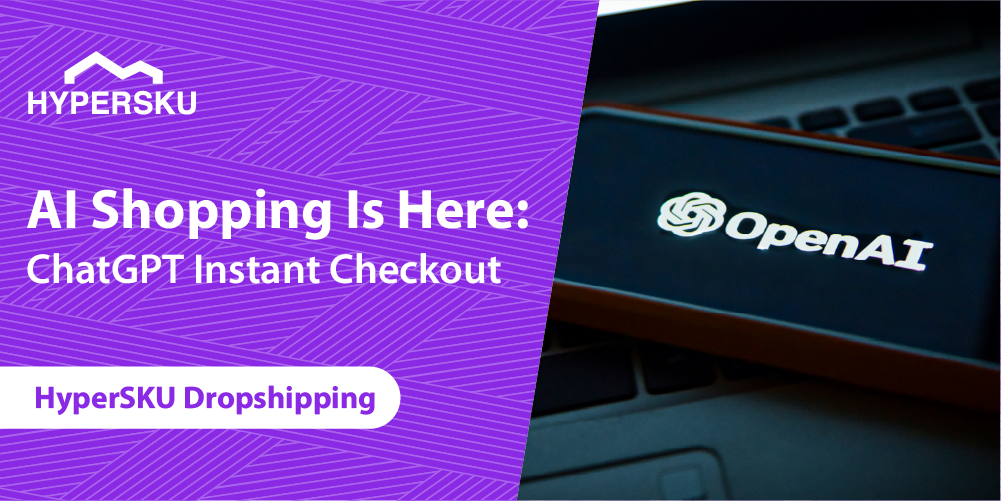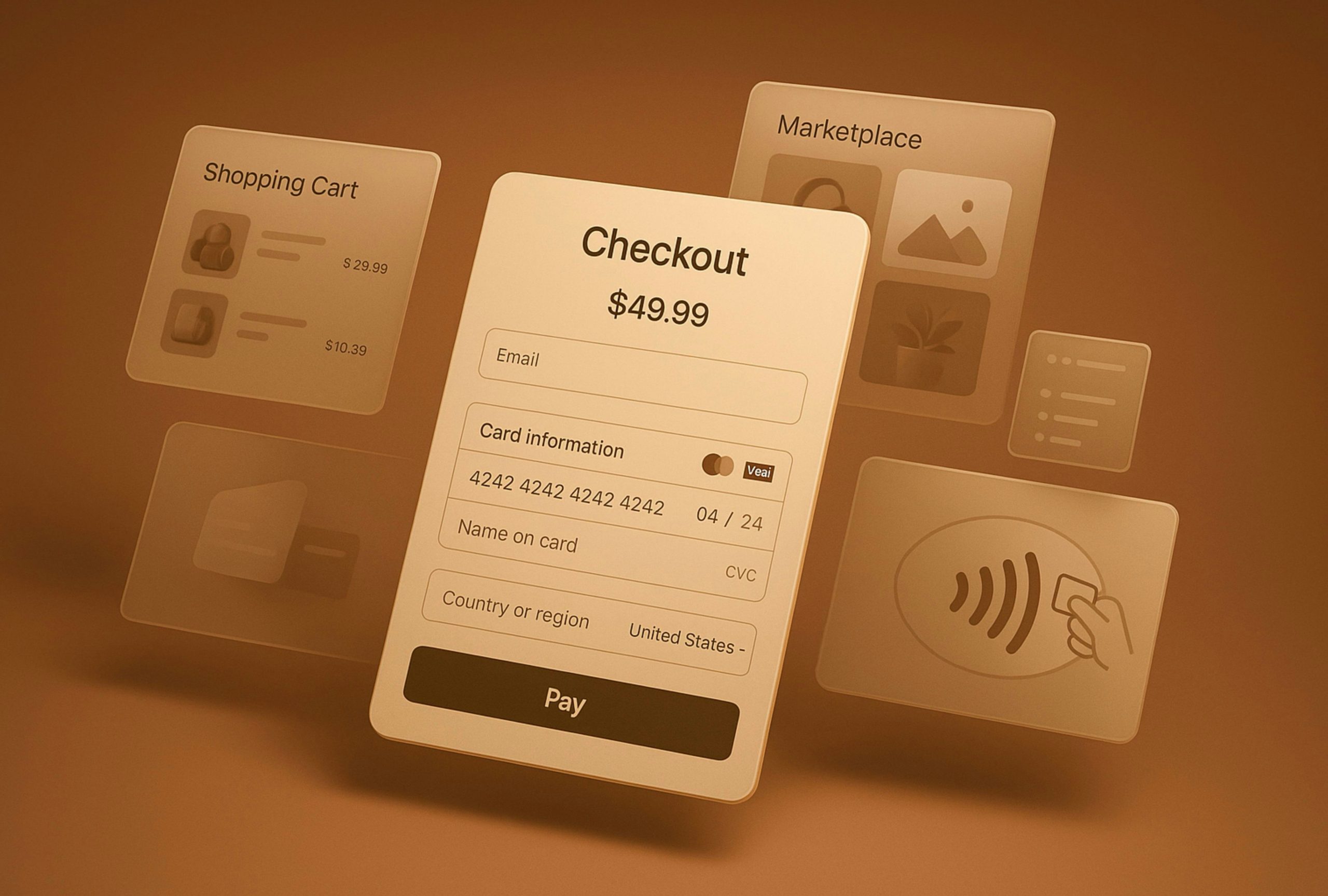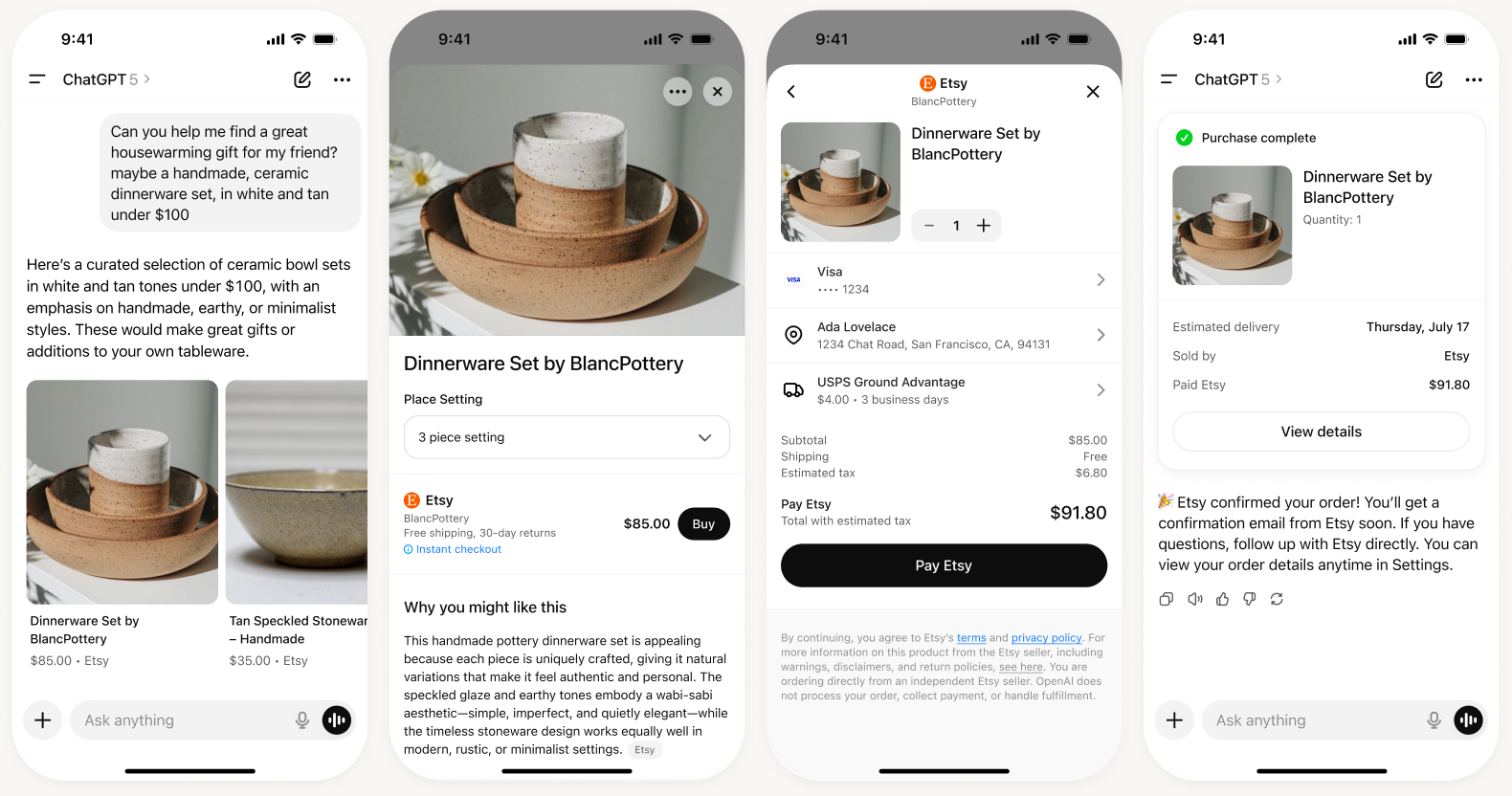From Chat to Cart: What ChatGPT Instant Checkout Means for Your Online Store
ChatGPT Instant Checkout is affecting how customers discover and buy products. See what it means for DTC brands and dropshippers, and how to optimize AI visibility without compromising brand and fulfillment.


HyperSKU
Posted on October 10, 2025
The way we shop online is changing—again.
For years, we’ve been typing product names into Google, scrolling through pages of results, and jumping between websites before finally hitting “buy.” But now, a new wave of AI-driven shopping is flipping that experience on its head.
Imagine this: instead of clicking through endless tabs, you ask an AI tool like ChatGPT, “Find me a waterproof winter jacket under $100,” and within seconds, it not only recommends one but also lets you check out instantly—without leaving the chat.
That’s the direction online shopping is heading, and it’s happening faster than most people realize.
Platforms like Google and PayPal are already testing similar instant purchase features, reducing friction between discovery and checkout. Even Alexa and Google Assistant have offered versions of voice-based ordering for years—“Alexa, reorder my coffee beans”—but ChatGPT takes it to another level.
Instead of a command, it feels like a conversation. Instead of searching, you’re simply deciding.
ChatGPT’s Instant Checkout feature represents a new step in the evolution of eCommerce: one where discovery, recommendation, and purchase all happen seamlessly within a single chat window.
In this blog, we’ll explore what this Instant Checkout feature really means for eCommerce—
how it works, what opportunities it opens up for sellers, and whether it’s just a buzzword or the start of a whole new way to shop online.

Source: Unsplash
Instant Checkout: What It Is and How It Works
ChatGPT’s Instant Checkout is exactly what it sounds like: a way to shop without leaving the chat. When a user asks for a product recommendation, the AI can now display options with images, prices, and “buy now” buttons. With a few clicks, the purchase can be completed right there.
Currently, this feature is live for U.S.-based Etsy sellers, and OpenAI has confirmed that over one million Shopify merchants will be included soon (Source: OpenAI). That means products from Shopify stores could appear in AI search results, potentially offering a new channel for discovery.

The checkout process relies on Shopify’s Shopify Pay infrastructure to handle payments securely. While it hasn’t been officially stated that using Shopify Payments guarantees your product will appear, the community largely expects it to be a key factor.
In short, Instant Checkout merges AI-powered product discovery with direct purchase, turning ChatGPT from a recommendation tool into a potential shopping channel.
Benefits: Seamless UX, Higher Conversion
One of the biggest selling points of ChatGPT Instant Checkout is convenience—for both shoppers and sellers.
For shoppers:
- They don’t have to jump between tabs or websites.
- Product discovery and purchase happen in a single conversation, which reduces friction and makes the process feel effortless.
For sellers:
- Easier checkout can mean higher conversion rates, especially for impulse purchases or trending products.
- Small merchants and dropshippers may gain additional visibility as AI recommends products based on user queries, potentially attracting audiences who wouldn’t have found them otherwise.
- The conversational format allows products to be discovered in a more personalized context, making them feel relevant to the shopper’s immediate needs.
In essence, Instant Checkout is designed to streamline the shopping experience, shorten the path from discovery to purchase, and potentially boost sales for merchants who are prepared.
Challenges: Brand Erosion in the AI Shopping Era
While ChatGPT Instant Checkout offers convenience, it also raises a key concern for merchants: brand erosion.
Many Shopify merchants build their stores to stand out from marketplaces like Amazon or Etsy, controlling the customer experience and fostering brand loyalty. With AI-driven checkout, however, the customer’s focus shifts from the brand to the platform itself. Algorithms may prioritize factors like price, stock, or product popularity over your unique brand story.
Reddit discussions highlight this worry:
“People build on Shopify to differentiate from the marketplace model of Amazon. But now, that vast customer base becomes the product. The race to the bottom accelerates — entrepreneurs get squeezed, and big platforms reap the rewards.”
From a personal perspective, I might ask ChatGPT for product recommendations, but I would still click through to the merchant’s site before buying. Most consumers likely behave similarly — AI can guide discovery, but it cannot replace the trust and context of the actual store experience.
For DTC brands and dropshippers, the takeaway is clear: while AI can bring additional exposure, long-term success still depends on maintaining brand identity, product quality, and customer trust.
How DTC Brands & Dropshippers Can Adapt
To get your products noticed in ChatGPT Instant Checkout or other AI-powered shopping platforms, the key is to make your products discoverable, understandable, and trustworthy. Here’s how merchants can approach it:
Make Your Site AI-Accessible
- Ensure your website allows AI crawlers to access your product pages (ChatGPT relies on Bing for crawling).
- Check your robots.txt file and remove any barriers that might block crawlers.
- Upload your products to Google Merchant Center and other official feeds to increase discoverability.
- Fill out OpenAI’s official form to help ChatGPT discover and show your products.
Optimize Your Content for AI Understanding
- Structured Data: Add JSON-LD schema to product pages, including name, price, availability, and reviews.
- Rich Media: Include multiple images or videos showing products in use, which improves both AI understanding and user experience.
- Customer-Friendly Language: Use titles and descriptions in the way customers actually search, emphasizing benefits over features.
- This overlaps with traditional SEO: clear, searchable content helps AI understand your products while also helping human shoppers.
Gather AI Feedback & Take Action
- Treat AI as a testing tool: see which stores it recommends for your product category.
- If your store isn’t recommended, investigate why — it could be related to page structure, clarity of titles/descriptions, or product presentation.
- This process helps identify areas of your site that may need adjustment to improve discoverability.
- Keep the evaluation objective — don’t tell AI it’s your store, so the feedback reflects its actual assessment.
Keep in Mind: AI Visibility Is Only Part of the Puzzle
- Even with perfect optimization, product quality, inventory management, and customer experience remain essential.
- A reliable fulfillment partner, like HyperSKU, ensures products are in stock, shipped quickly, and consistently presented — supporting both AI recommendation performance and real customer satisfaction.
Final Thoughts
ChatGPT Instant Checkout and similar AI shopping features make discovery faster and the checkout process more convenient. But for most brands, these tools are an addition, not a replacement, for your existing eCommerce strategy.
While AI can help potential customers find your products, your brand identity, product quality, and customer experience remain irreplaceable. A strong brand story, reliable fulfillment, and thoughtful post-purchase experience are what keep customers coming back — something AI alone cannot deliver.
For DTC brands and dropshippers, the key is balance: embrace AI as a discovery and conversion tool, but continue to invest in your website, content, and operations. Optimizing for AI should complement, not replace, the human elements that make your brand unique.
In practice, this means:
- Keep your site crawlable and product information clear.
- Monitor how AI interacts with your store and adjust where needed.
- Ensure fulfillment and customer experience are seamless — working with a partner like HyperSKU can help you scale without compromising reliability.
By combining AI-driven efficiency with human-driven brand care, your store can stay competitive in an evolving shopping landscape, without losing the qualities that set you apart.
